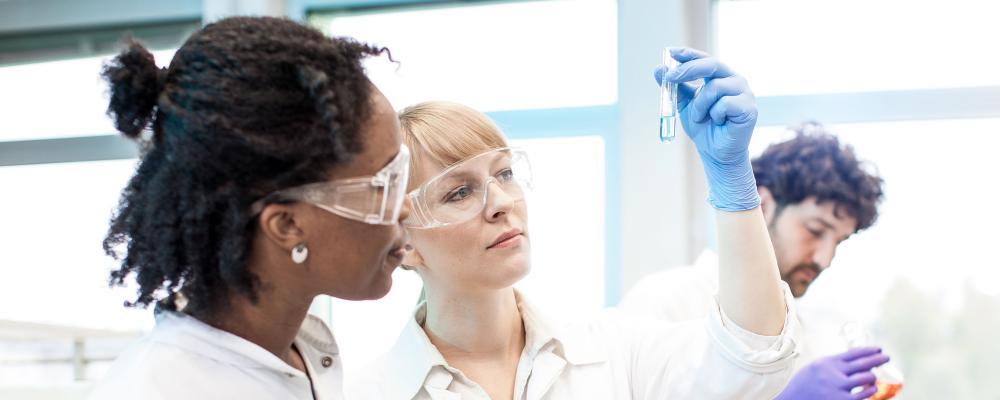Portal Our Laboratories

Contracted Unit for the Characterisation and monitoring of phenomena of resistance development (CASPER USC) of the Lyon Laboratory
Head of Unit: Benoit Barres
The Contracted Unit for the Characterisation and monitoring of phenomena of resistance development (CASPER USC) studies the resistance of crop pests to plant protection products, commonly known as pesticides. It is also a joint ANSES and INRAE (French National Research Institute for Agriculture, Food and the Environment) platform for analysis and research in the area of resistance to plant protection products. This topic is addressed from a practical standpoint, as part of the national surveillance plan on resistance to plant protection products, and also in more fundamental terms, through research projects.
Nine Anses employees work in the CASPER USC: five scientific project leaders, three technicians and one administrative employee. It hosts two interns (Master 2, University Institute of Technology students) per year on average and jointly supervises thesis students.
One of the unit’s central partnerships is with the members of the R4P network (Pesticide Resistance Forum and Research).
Research activities
The unit’s research work can be divided into three main themes:
- characterising mechanisms of resistance in pests;
- studying the costs associated with the development of resistance;
- exploring spatial and temporal distributions of this resistance in agronomic landscapes.
Mechanisms of resistance in pests
The unit works to characterise the genetic modifications involved in the resistant phenotypes identified through biological testing. These resistant phenotypes can be the result of DNA mutations or variations in gene expression. These studies provide information that can have an impact on the resistance management strategy, such as the dominant or recessive nature of resistance, whether it is mono- or polygenic, etc. Understanding the genetic bases of resistance also enables the development of molecular biology analysis tools facilitating larger-scale, faster and more flexible surveillance approaches as compared to approaches based on biological testing.
Evolving cost of resistance
The unit also conducts research into the evolving cost of resistance to plant protection products. There is a cost of resistance when resistant individuals have a selective value lower than that of susceptible individuals in the absence of selective pressure, i.e. in the absence of plant protection products. In other words, this situation arises when, without treatment, resistant individuals show poorer performance than susceptible individuals: a shorter life, slower growth, fewer offspring. The existence of a cost can have a major impact on the management of resistance in agricultural plots. When there is a cost, other techniques that diversify selective pressures (other products, bio-control, agronomic strategies, etc.) are temporarily used to reduce the proportion of resistant individuals. However, there is not always a cost of resistance. There are cases where resistance has no impact or even positively affects the performance of the resistant individuals.
Evolving response to an agronomic landscape
In a context where the use of plant protection products is being reduced for the sake of sustainable agriculture, it is essential to better understand the factors that promote the emergence, spread and development of resistance to these products. Most of the CASPER USC's experiments are carried out in a laboratory. Working in a controlled environment ensures the precise evaluation and quantification of levels of resistance in crop pests to the studied active substances or plant protection products. One of the limitations of this type of approach is that it is usually difficult to translate the results in terms of field effectiveness. Actual practices are diverse and complex: alternating use of different products, climatic conditions, spatial organisation of crops, etc. This can lead to evolutionary dynamics in terms of the frequency and distribution of complex resistance. Our objective is to try to link trends and variations in resistance over time and through space to cropping practices, in particular to the frequency, quantity and variety of plant protection products used.
Main research projects, from the last five years and ongoing
DRAGON project (2018-2021), HERACLES thesis (2018-2021), QUANTALL project (2020-2022)
Funding: phytopharmacovigilance plan, Inrae and Anses
The advent of high-throughput sequencing tools has revolutionised several areas of biological research. The study of resistance to plant protection products is no exception. These projects aim to capitalise on the spread of these tools to study the genetic bases of resistance and develop high-throughput molecular surveillance tools. They are currently being used to develop new methods and will be featured in publications in international peer-reviewed journals.
VIGILANCE project (2016-2020)
Funding: through the phytopharmacovigilance scheme
In a context where the resistance of pests to plant protection products is constantly growing (new cases, geographic expansion), the development of new substances with novel modes of action has become extremely rare (if not non-existent), and the new alternative methods implemented have not yet eliminated the need for chemical control, it is urgent to set up a more rigorous system for monitoring the emergence and frequency of this resistance in French and European crops. It is also critical to develop knowledge on the various mechanisms of resistance in pests. This knowledge determines which strategies are chosen to optimise the use of existing products: using them better to use them less. The aims of this project were to conduct a review of the national surveillance system for resistance to plant protection products in pests and provide proof of concept of the operation of a national platform for studying resistance to these products. It has already been described in several publications in international peer-reviewed journals (R4P Network 2021; Blouquy et al. 2021; Fontaine et al. 2019).